The REM Proposal is the Best Transit Project Montreal has seen in 30 Years
April 28th, 2016 by ant6nLast Friday, the Caisse de Dépôt presented their project to build the ‘REM’, short for ‘réseau électrique métropolitain’. It’s an electrified rapid transit line connecting Montreal with its suburbs in the West Island and Brossard, which includes a branch to the Trudeau international airport.
The proposal is exciting: 67 kilometres and 24 stations, replacing the existing Deux-Montagnes line (30 km) and the bus corridor to Brossard with one large line.
There’s a lot to like about this project:
Electrified, Frequent, All-Day, Rapid Transit
Why it’s good:
Electrified: electric trains accelerate faster, which allows for more frequent stops while maintaining high overall speed. Moreover, electric trains are much cheaper to operate than diesel ones, so transit agencies can afford to run them all day.
Frequent: Frequency is freedom. Taking a train that comes every 30 minutes requires planning ahead: show up too early or too late, and you risk waiting half an hour for the next train. Frequent service means travelers can just show up at the station, knowing there will be a train within a reasonable time.
All-day: Commuter rail provides a very specific service: shuttling office workers between their homes in the suburbs and their 9-to-5 jobs downtown. All-day transit allows anyone to take any trip along the line at any time of the day. Frequent all-day service increases flexibility and reliability. If you can take transit for any trip you need to make during the day, rather than just the commuting trip, you can rely on it more, so you don’t have to rely on owning a car.
Previous proposals to improve transit only focused on 1 or 2 of these criteria. For example:
- Previous proposals to improve transit to the West Island included adding tracks to the existing diesel commuter rail line, allowing more trains during rush hour without providing frequent, all-day transit.
- Before the Caisse’s REM project, the most recent proposals for the new Champlain bridge did not include a rapid transit line, but would instead have replaced the existing bus corridor with just another bus corridor.
- The Mascouche line, the only transit project completed in almost ten years, is served by only 10 trains a day per direction, and looks more like an exercise in drawing lines on a map than providing a transit line that can move around a significant number of people
Integrated Regional Network Using Through-Routing
Through-routing is where a single line goes from one end of a region, through downtown, to the other end. Such regional lines facilitate trips other than between downtown and its suburbs. By making these trips faster and more convenient, more people are encouraged to take transit. In many places in the world, this is how transit systems are designed.
In Quebec, however, such regional interconnected systems have never been a priority, as the practice was to solve each problem with its own technology, its own line, without much concern for designing a network. Need more capacity on the Deux-Montagnes line? Improve the Deux-Montagnes line. Need an airport connection? Build an express airport line. Need to improve transit to the West Island? Add more tracks to the existing diesel commuter rail line. What about the South Shore? Light rail on the Champlain bridge!
The Caisse’s project is the first one that shows a much more integrated vision for regional transit, folding all these projects into a single line. Now you could take transit from suburb to suburb, or from one suburb to places not quite downtown. Imagine going directly from Brossard to UdeM!
Repurposing Existing Infrastructure
Reusing existing infrastructure makes projects more capital efficient, which means more transit for our money.
The REM network is to be built on the Deux-Montagnes line, which is already electrified and connects the West Island to downtown through the Mount-Royal tunnel. Using the tunnel makes sense: it provides a direct connection from the north of Montreal through the mountain to Gare Centrale in just 6 minutes, basically like a subway. Given how costly the Blue line extension is supposed to be, it’s a good thing we have the tunnel already built.
Connections with Existing Lines
A good transit network requires good transfers between lines, to allow users to reach more destinations quicker. That’s because people want to travel between all sorts of places, which are not necessarily on the same line. Consequently, good connections will allow making these trips quicker and with fewer transfers.
For example, the station at Edouard-Montpetit will allow riders on the Blue line to directly connect downtown, without having to transfer twice (to the Orange line and then the Green line).
Also, consider that currently, the Saint-Jérôme line crosses the Deux-Montagnes line at Canora, but there is no stop or transfer possible. Instead, St-Jérôme line travelers are stuck on their train for another 25 minutes while Deux-Montagnes trains will be downtown in 6 minutes. The transfer station at Canora will help reduce their travel times a lot.
Planning for good transfer stations to existing lines for new transit lines seems obvious, but it’s not something that’s usually being considered much in Montreal. Consider the following examples:
- The Mascouche line has one inconvenient connection at Sauvé, with a long walk outside through a cemetery.
- The line was built without transfer to the St-Jérôme line, even though their stations are 200m apart near Marché Central, because both lines were independently designed to only shuttle commuters to and from work.
- The proposal by Aeroport de Montréal for the airport train envisioned an express that would’ve gone straight downtown, with no connection to any other line, even though adding a single connection at Vendôme would have increased the convenience for many users.
It is therefore refreshing to see the Caisse’s REM proposal give consideration to how their system will connect to the lines crossing it.
Overall, I’m excited that the Caisse wants to get this line operational in only four years, a line that is truly regional, a line that will benefit more people than just the typical commuters. In the last 30 years, the only rapid transit we’ve built is the 4 Km Laval extension of the Metro line, that means a bit more than a kilometre per decade. Now we’re building almost seventy kilometres all at once, built by an organization that has proven it can get a transit line built. Montreal is dreaming transit again.
Thanks to JC for her help in writing the article.
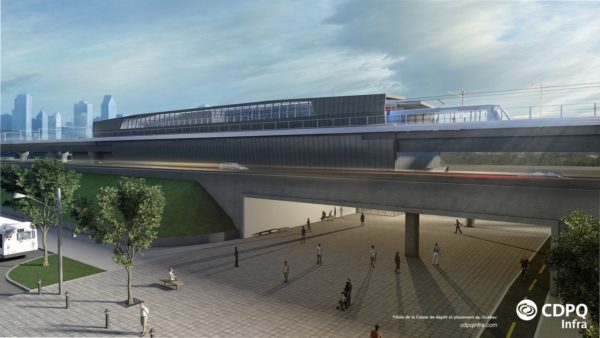
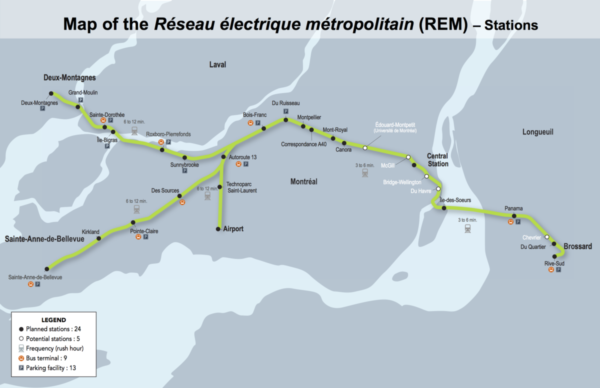
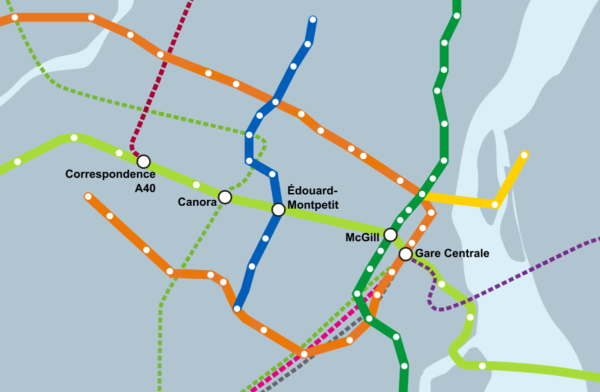
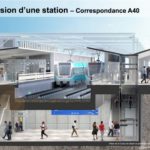
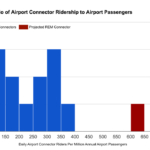
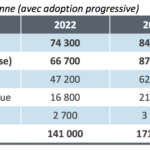
April 28th, 2016 at 14:03
Very cool article about the logistical benefits of this proposal. Organizationally speaking, what are your thoughts on how it’s funded/the parties involved in the construction and the operation of this railway?
April 28th, 2016 at 17:54
@Apocryphon
That’s a good question. The Caisse has funny incentives wanting to make it profitable, which has good sides and bad sides. On the one hand, they want to get it built, and buil quickly, and they want as many people on it as possible. On the other hand, the social desire to have as much regional transit as possible may not align very well with the incentive for profit — for example the Edouard-Montpetit station may be thrown under the bus as not being profitable, even thought it’s cost-benefit to society is positive. Since we the public have to put forward a lot of money for this line, I think we should ensure that it’s built properly and with the interests of all in mind.
April 29th, 2016 at 21:54
How could you possibly justify this project? Do you really think there are ridership levels high enough to justify a frequent rail link to the west island following the 40? The 470 and Vaudreuil-Hudson line have lower ridership than most of the 10 minute max network. The west islanders signed a contract with the auto devil by purchasing property there. They don’t deserve billions of dollars worth of capital investment when montreal’s infrastructure is already over capacity nearly everywhere. Although I would agree that there is need for a rail link to brossard, I think a much more cost efficient method would be to simply create a new AMT commuter line that diverges from the Mt-St-Hilaire line, goes south to the Quarter Dix/30 and then continues south-east to St Jean-sur-Richelieu. All the track is already there.
This plan is absolute madness. Its an asinine attempt by transit planning authorities to fill in the gaps in the montreal metro network map. Similar to the comments you made about the mascouche line.
December 25th, 2020 at 23:29
Howdy!
Revisiting all 14 posts about the REM as it nears completion. Thanks again, and it will be interesting to compare reality to supposition once all is said and done.